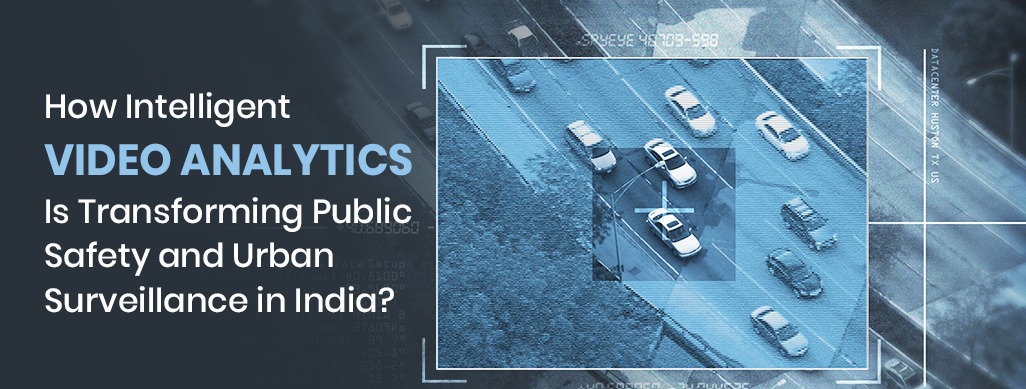
We use cookies to ensure that we give you the best experience on our website.
By using this site, you agree to our use of cookies. Find out more.

With India's cities expanding at an incredible speed, certain newly arising challenges have to be dealt with. Also, expanding urban populations bring notorious traffic jams, public space overcrowding, and increased public security threats. Traditional surveillance methods usually fail to deal with this area of public security. Next Generation Video Analytics India is filling this gap with a new approach that helps make cities safer and smarter by turning passive cameras into systems that help authorities.
In the past, CCTV cameras enabled visual monitoring at a basic level. However, they did not have much worth as a tool. Reacting swiftly to threats was impossible, as large volumes of footage remained unviewed. In the last ten years, urban centres have gradually abandoned these old-age static monitoring systems and adopted modern systems using smart video analytics. Today, smart monitoring tools are being implemented by local authorities and the private sector so that the ever-changing needs of modern cities can be met.
What sets these systems apart is their ability to interpret visual information and respond immediately.
Basic functions include:
This technology changes surveillance from reactive to anticipatory and preventive approaches.
Urban India has crowded places everywhere: clothing stores, temples, festivals, and transport hubs. There is no way to monitor these types of places manually. Intelligent video systems are solving this issue through continuous monitoring of environments, such as:
These small but crucial actions make a safe space for citizens in their everyday environments.
Traffic in Indian cities rarely looks like a normal flow of traffic. Parking violations, especially, increase the challenge for enforcement officers. Intelligent surveillance removes some of their burden, such as monitoring illegal parking.
Traffic safety use cases:
These types of activities can improve compliance and minimise the injuries that occur from traffic crashes.
Law enforcement has nothing but time, especially during critical incidents. Intelligent surveillance can have accurate and actionable information in real time.
Automate repetitive monitoring, recording, or reporting tasks with RPA software so officers can make decisions instead of performing checks.
Intelligent surveillance isn't just for suppression but also provides insights into city planning.
For example, units of inquiry to include:
These data-driven insights allow governments to create safe and efficient cities for their citizens.
With great surveillance comes great responsibility for personal rights management. Intelligent systems can bring incredible safety, but should be used thoughtfully.
Responsible practices include:
A mindful balance of safety versus ethics is the most effective way to engender public confidence.
The future of Next Generation Video Analytics India is bright, and its deployment will only increase. Consider the impact of IoT and smart sensors being integrated into devices and cities' command centre operations. The opportunities are almost limitless. When combined with RPA software, operational processes can be automated and streamlined, with the potential for human errors removed and speedier decisions made.
As a result of these advances in technology and the deployment of Video Analytics in the Indian cities, we can look forward to smarter traffic management, safer public gatherings, and more powerful crime prevention, which will ultimately enhance the safety of urban living for millions of people.
From chaotic markets to crowded highways, intelligent video surveillance has become an invisible umbrella of protection in India's largest cities. It has not only enhanced law enforcement’s ability to act quicker and more efficiently, but it is also developing cities that are being mapped for better city planning. As India continues to adopt progressive and smart systems, we are paving the way for safer, smarter, and more future-ready cities.
More technology means smarter video surveillance; Next Generation Video Analytics India, for instance, analyses data in real-time with alerts, facial recognition, and predictive data and charts, and will allow law enforcement to be more active and effective.
Smart surveillance can track violations, manage traffic flow, and highlight behaviours and safe riding patterns, while helping to reduce congestion at busy intersections.
RPA aids in the automation and repeatability of monitoring activities, allowing officers to use less manual activity and have more real-time and automated decision-making.
Intelligent video analytics tracks large gatherings, identifies anomalous behaviour, identifies unattended items, sends alerts when risks arise, involves authorities well before things escalate, and, in turn, makes public spaces safer.
There are, but practices can be established, and reasonable safeguards can be put in place (data encryption, working with regulatory standards, and clear use of knowledge) to balance privacy with benefits.
Leave a Comment
Your email address will not be published.